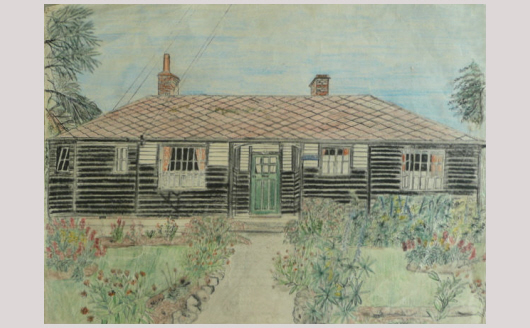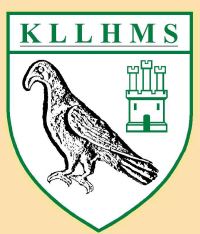The Police Bungalow
On 9th September 1922 a police general order was issued detailing that on 25th September 1922 PC 4 Henry Eames would move from Kings Langley to Flamstead.and be replaced the same day by PC 87 Herbert Ward (born in Tring) moving into the house, No 65 High Street, vacated by PC Eames.
In 1922 the Kings Langley Police Bungalow had been built in Watford Road, at what is now the entrance to Great Park. The first family to occupy it were the Wards. P.C.Ward was succeeded in 1930 by P.C. Stone, who lived at the bungalow until his retirement in 1958. Soon afterwards the bungalow was dismantled and removed to make way for the new police houses. It was later re-erected in Hemel Hempstead and served different purposes for several more years locally.

The story as told here is based on an interview with P.C. Ward’s son A.W. (Peter) Ward, a talk by P.C. Stone’s son Geoffrey Stone, and reminiscences of Mike Reveley.
The bungalow was built by Bolton & Paul, who were also aircraft manufacturers. It was of pre-fabricated construction, with a timber frame, weatherboarded walls and red asbestos tiles on the roof.
Peter Ward described the interior layout: The living room ran the full width of the bungalow, with windows to the front and rear. It had a ‘Kitchener’ stove, with open fire and oven. There was a drawing room and three bedrooms, one of which was used as the police office. The side entrance at the Watford end led into a scullery with a sink and gas stove and a larder. Beyond that was a bathroom with a cast iron bath with a cold tap only and a ‘copper’ with a cold tap over it. Water for bathing and for clothes washing was heated in the copper. There was a WC within the building but it only had an outside door, so you had to go outside to get to it.
Initially there was no gas or electric lighting, so paraffin lamps and candles were used. Electricity came in 1936, when a lamp and a blue plaque were erected to show that the bungalow was a police station. It was busy, being on the main road, with no other police stations between Watford and Berkhamsted.
The garden at the front, facing on to the High Road, was divided into two squares by a central path up to the front door. The large back garden was 100 yards long and had chicken runs. There was a shed built of railway sleepers with a corrugated iron roof, used for garden tools and as a coal store. The rest of the garden was cultivated, Peter’s father growing vegetables and his mother flowers.
Geoffrey Stone recalled that in 1938 their chimney caught fire. ‘Everyone in KL thought the police station was going to burn down - what a joke! Mr Cook had a new fire engine, kept in the glass enclosure in front of Cook’s garage. They came and got out the hose, but it wasn’t long enough to put the chimney fire out - on a bungalow!’ In the end a fireman put the fire out by pouring water from a saucepan down a hole which had formed in the chimney.
Mike Reveley continues the story.
Unfortunately I was unable to be at the very well attended talk given by Geoffrey Stone but delighted to learn that an audio tape recording was made at the meeting. Geoffrey's splendid memories of village life in the 1930s and 1940s were quite fascinating but it was his fond recollections of living in the prefabricated wooden police home that had a particular resonance with me. As I grew up in the village in the 1940s and 1950s, attended the village school in Church Lane and walked up and down the Drift to cub and scout meetings, the police bungalow was a very familiar landmark. From a discreet distance, naturally. Years later I got to know the bungalow at close hand.
In Geoffrey's talk in 2002 he described how an elitist neighbour referred to the police station house as a 'hut'. This was, as it turned out, as prescient as it was patronising for what had been the family home for the Stone and Ward families did eventually become known as a 'Hut' but only after it had served some time in 'Paradise'!
After being dismantled as part of the development of Great Park the bungalow had first been taken from Kings Langley to be used as a monumental mason’s workshop in an area of Hemel Hempstead just off the multi (Magic) roundabout known as Paradise. In 1965 it was bought by the Gade Self Build Group again taken apart and reassembled (less its chimney, asbestos tile roof and porch) to serve as a rest room and storage area. For three years it was indeed a hut, - a Site Hut. After the completion by the group of the 16 houses, it was once again dismantled and taken away for use as a furniture store in Amersham.
I have often wondered what the Stone family would have thought about the later use of their home in this way. I can report that throughout the time of the building project we incurred no serious loss of materials; nor was any damage done to our equipment or houses. Was the legendary King's Langley village bobby still on patrol and perhaps keeping a watchful eye on his old home from that Great Police Station in the sky?




